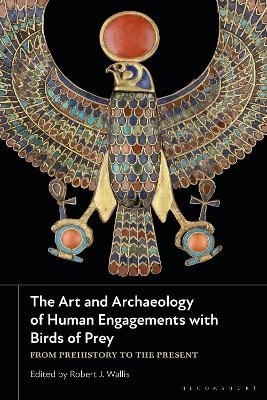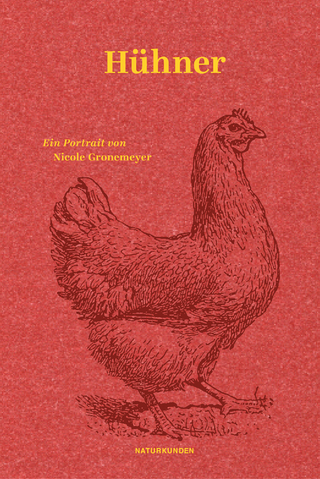
The Art and Archaeology of Human Engagements with Birds of Prey
Bloomsbury Academic (Verlag)
978-1-350-26799-2 (ISBN)
- Noch nicht erschienen (ca. Mai 2025)
- Versandkostenfrei innerhalb Deutschlands
- Auch auf Rechnung
- Verfügbarkeit in der Filiale vor Ort prüfen
- Artikel merken
From their depictions as powerful beings in visual art and their important roles in Indigenous mythologies, to the significance of their body parts as active agents in religious rituals, the intentional deposition of their faunal remains and the display of their preserved bodies in museums, there is no doubt that birds of prey have been figures of great import for the shaping of human society and culture. However, several of the chapters in this volume are particularly concerned with looking beyond the culture–nature dichotomy and human-centred accounts to explore perspectival and other post-humanist thinking on human–raptor ontologies and epistemologies. The contributors recognize that human–raptor relationships are not driven exclusively by human intentionality, and that when these species meet they relate-to and become-with one another. This 'raptor-with-human'-focused approach allows for a productive re-framing of questions about human–raptor interstices, enables fresh thinking about established evidence and offers signposts for present and future intra-actions with birds of prey.
Robert J. Wallis is Senior Lecturer and Staff Tutor in Art History at the Open University, UK.
Table of Contents
Introduction (Robert J. Wallis, The Open University, UK)
Part 1 The Materiality of Human Engagements with Birds of Prey
1. Raptors as companions: comparative deep-time forays in multispecies archaeology (Shumon T. Hussain, Aarhus University, Denmark)
2. Gods, Kings and Offerings: Raptors in Ancient Egypt (Salima Ikram, American University in Cairo, Egypt)
3. Ghosthawk Worldings: Raptor Haruspicy During the North European Bronze Age (Joakim Goldhahn, University of Western Australia, Australia)
Part 2 Visualising Human Relations with Raptors
4. Golden Eagles: Raptor Imagery Biographies in Kazakhstan During the Early First Millennium BCE. (Kenneth Lymer, Independent Scholar, UK)
5. Visual Hybridity, Political Power and Cultural Contest: Kitan Liao (916-1125 CE) and Jurchen Jin (1115-1234 CE) Textiles with Falconry-Related Imagery (Leslie Wallace, Coastal Carolina University, USA)
6. ‘The Falcon-Cloak Whistled’: Bird Fibulae, Falconry and Powerful Women in Seventh Century Scandinavia (Kristina Jennbert, Lund University, Sweden)
Part 3 Post-Humanist Ontologies of Human-Raptor Relations
7. Relating to Raptors: The ‘upper part of a hawk’s head and beak’ in a Chalcolithic/Early Bronze Age ‘Beaker’ Grave, Driffield, East Yorkshire (Robert J. Wallis, The Open University, UK)
8. Raptors in Precolumbian North America: An Ontology of Art (Max Carocci, The American University in London, UK)
9. Birds of Prey in Ancient Amazonia: Predation and Perspective in Ceramic Iconography (Cristiana Barreto, Museu Paraense Emílio Goeldi, Brazil, and Marcony Alves, University of Sao Paulo, Brazil)
10. ‘Now I Am a Bird, and Now I Am a Man’: Post-humanism, Raptors and the Rus’ (Neil Price, University of Uppsala, Sweden)
Part 4 Indigenous Knowledges of Birds of Prey
11. Birds of Prey, ‘Our Mothers’ and Women of Power: The ‘Spirit Bird of Night’ Masquerade in Yoru`ba´ Art and Thought (Henry John Drewal, University of Wisconsin-Madison, USA)
12. Pouakai: Rock Drawings of Haast’s Eagle or New Zealand’s Legendary Bird? (Gerard O’Regan and Emma Burns, Tuhura Otago Museum, New Zealand, and Te Maire Tau, University of Canterbury, New Zealand)
13. Ancestors, Messengers and ‘Good Country’: Birds of Prey, Rock Art and Indigenous Knowledge in the Kimberley, Northwest Australia (Ana Paula Motta and Martin Porr, University of Western Australia, Australia)
| Erscheint lt. Verlag | 1.5.2025 |
|---|---|
| Zusatzinfo | 50 bw illus |
| Verlagsort | London |
| Sprache | englisch |
| Maße | 156 x 234 mm |
| Themenwelt | Sachbuch/Ratgeber ► Natur / Technik ► Naturführer |
| Geisteswissenschaften ► Archäologie | |
| Naturwissenschaften ► Biologie ► Zoologie | |
| Sozialwissenschaften ► Ethnologie | |
| Sozialwissenschaften ► Soziologie | |
| ISBN-10 | 1-350-26799-6 / 1350267996 |
| ISBN-13 | 978-1-350-26799-2 / 9781350267992 |
| Zustand | Neuware |
| Informationen gemäß Produktsicherheitsverordnung (GPSR) | |
| Haben Sie eine Frage zum Produkt? |
aus dem Bereich


